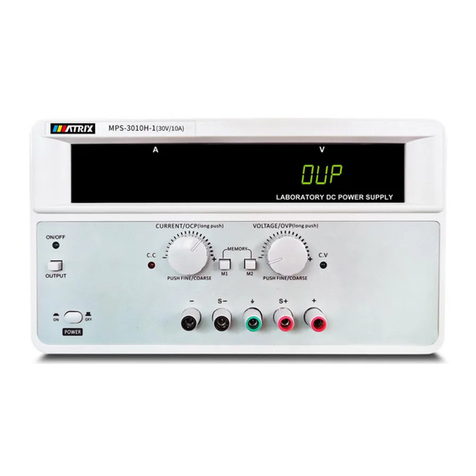
CHAPTER 1 INSPECTION AND INSTALLATION....................................................................................................... 6
NSPECTION
................................................................................................................................................................ 6
1.2 DIMENSION................................................................................................................................................................. 7
CHAPTER 2 QUICK REFERENCE................................................................................................................................ 9
HE FRONT PANEL AND REAR PANEL DESCRIPTION
................................................................................................. 9
2.1.1 Front panel ...................................................................................................................................................... 9
2.1.2 The Rear Panel ............................................................................................................................................... 9
RELIMINARY CHECKOUT........................................................................................................................................ 10
2.2.1 Check the list of supplied items .............................................................................................................. 10
2.2.2 Power on Pre-check.................................................................................................................................... 10
2.2.3 Checkout procedure ................................................................................................................................... 11
2.2.5 If the power supply does not turn on ..................................................................................................... 13
2.2.6 How to exchange the fuse......................................................................................................................... 14
2.2.7 Adjust the carrying handle........................................................................................................................ 14
CHAPTER 3 SPECIFICATION ...................................................................................................................................... 15
PECIFICATION
......................................................................................................................................................... 15
2.2 A
DDITIONAL FEATURES
............................................................................................................................................ 17
CHAPTER 4 FRONT-PANEL OPERATION ................................................................................................................ 18
4.1 FRONT-PANEL OPERATION OVERVIEW.................................................................................................................... 18
4.2 P
ANEL DESCRIPTION ............................................................................................................................................... 19
ESCRIPTION .................................................................................................................................................. 20
ENU DESCRIPTION ................................................................................................................................................ 20
ANEL OPERATION .................................................................................................................................................. 23
4.5.1 Channel Operation ...................................................................................................................................... 23
4.5.2 OUT ON/OFF ................................................................................................................................................. 24
4.5.3 Timer operation............................................................................................................................................ 24
4.5.4 Set Voltage .................................................................................................................................................... 24
4.5.5 Current Operation........................................................................................................................................ 25
4.5.6 Save and Recall Operation........................................................................................................................ 25
4.5.7 OVP operation .............................................................................................................................................. 25
4.5.8 Key Lock Set................................................................................................................................................. 26
4.5.9 Protections.................................................................................................................................................... 26
4.6 MENU DESCRIPTION ................................................................................................................................................ 26
CHAPTER 5 COMMUNICATION WITH PC ................................................................................................................ 32
INTERFACE
................................................................................................................................................... 32
5.2 USB
INTERFACE....................................................................................................................................................... 34
INTERFACE ..................................................................................................................................................... 34
5.4 STANDARD SOFTWARE AND SCPI COMMAND.......................................................................................................... 34































